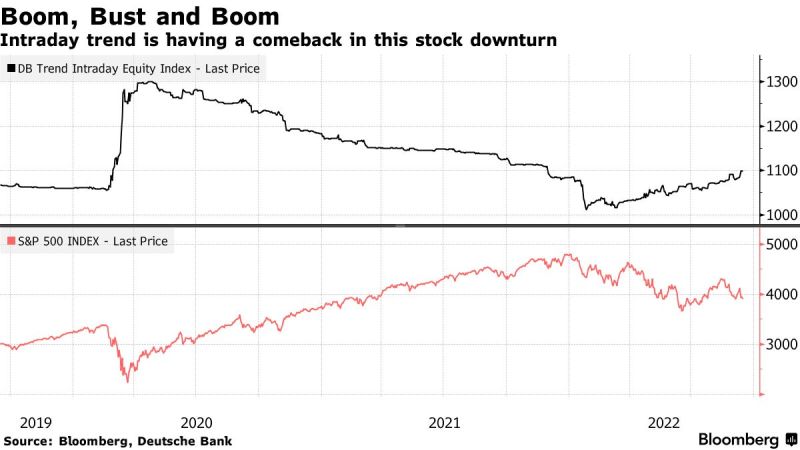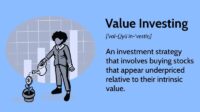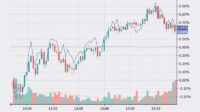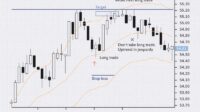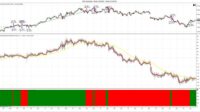Stock Market Trends Today – Stock price chart illustrating stock market crash 2020 shows a sharp drop in stock price followed by a recovery.
A stock market crash is a sudden, dramatic decline in price values across a cross-section of a major stock market, resulting in a significant loss of paper wealth. Crashes are driven by panic selling and fundamental economic factors. They often follow speculation and economic bubbles.
Stock Market Trends Today
A stock market crash is a social phenomenon in which external economic events combine with crowd psychology in a positive cycle where some market participants sell, prompting more market participants to sell. In general, crashes usually occur under the following conditions: long-term commodity prices (bull market) and excessive economic confidence, price-commodity ratios exceeding long-term market averages, and the use of extraction and pressure on margins. . Forum participants. Other factors such as wars, large vehicles, changes in federal laws and regulations, and natural disasters in economically prosperous areas can also cause significant declines in the market value of broad-spectrum timber. Commodity prices for firms competing against affected firms may rise despite the collapse.
Stock Market Chart, Data , News Stock Photo
There is no specific definition for stock crash numbers, but the term is generally used for a decline of more than 10% in a stock market index over several days. Crashes are often distinguished from bear markets (periods of market price decline, measured in months or years) in that crashes involve panic selling and sudden, dramatic price declines. Crashes are often associated with bear markets; But not necessarily at the same time. Black Monday (1987), for example, did not lead to bear markets. Likewise, the bursting of the Japanese property price bubble went on for years without significant decline. Stock market crashes are not uncommon.
They crash unexpectedly late. As Niall Ferguson has said, “Before the crash, our world seems almost stable, subtle, and symmetrical at a certain point. So when the crash happens—and it must—it seems like a surprise to everyone. Our brains say it’s. No. Time.” Decline”.
Tulip Mania (1634–1637), in which some individual bulbs reportedly sold for more than 10 times the artist’s annual income, is often considered the first economic bubble on record.
During 1907 and 1908, supply prices fell by almost 50% due to various factors due to the handling of copper stocks by the Knickerbocker Trust Company.
Shares Widget For Website To Buy Or Invest. Financial Price Chart Widget. Modern User Interface Design Concept For Stock Market, Forex Or Crypto Currency. Price Up And Down Trends Against Bank Shares
Many of the investment trusts and banks that had invested their money in the stock market plunged and began to close. JP More bank runs due to Morgan’s intervention.
The economy grew tremendously during the Roaring Twenties. It was a technological golden age as inventions such as the radio, the automobile, aviation, the telephone, and electric power transmission grids were developed and adopted. Companies that benefited from these developments, including Radio Corporation of America (RCA) and General Motors, saw their stocks rise. Financial institutions also fared well as Wall Street banks floated in mutual funds (which are debt investments) such as Goldman Sachs Trading Corp. Investors profit from the stock market, particularly by using leverage through margin lending (that is, borrowing from a stockbroker to finance part of your stock purchase, using the purchased securities as collateral).
On August 24, 1921, the Dow Jones Industrial Average (DJIA) was 63.9. On September 3, 1929, 381.2 over six. He did not regain this status for another 25 years. By the summer of 1929, the economy had apparently contracted, and the stock market was subject to a series of volatile price declines. These declines fueled investor concern, and evts came to a head on October 24, 28, and 29 (known as Thursday, Black Monday, and Black Tuesday, respectively).

On Black Monday, the DJIA fell 38.33 points to 260, a 12.8% decline. The flood of the selling pressure tape system typically gave investors currency for the price of their shares. Telephone lines and telegraphs were jammed and could not get through. This empty message alone caused more fear than fear. The new age of technology, which had earlier been celebrated by investors, was now served with great pain.
Identifying Market Trends
The next day was Black Tuesday, a chaotic day. Forced to sell their stocks due to margin calls, investors filled any trades by selling stocks. The Dow fell 30.57 points to 230.07 on the day. He saw the glamor of his age as a good match for his nerves. In two days, the DJIA fell 23%.
In week d on November 11, 1929, the index was 228, a cumulative fall of 40% from the September high. The market rallied in the following months, but the recovery was temporary, leading unwary investors to further losses. The DJIA lost 89% of its value before finally crashing in July 1932. The crash followed the Great Depression, the worst financial crisis of modern times, which plagued the stock market and Wall Street throughout the 1930s.
The mid-1980s were a time of great economic optimism. From August 1982 to its peak in August 1987, the Dow Jones Industrial Average (DJIA) rose from 776 to 2722. Stock market indices for the world’s 19 major stock exchanges averaged 296% during the period. The average number of shares traded on the New York Stock Exchange rose from 65 million shares to 181 million.
The October 19, 1987, Black Monday crash was the culmination of a market collapse that had begun five days earlier on November 19. The DJIA fell 3.81% on October 14th, followed by a 4.60% fall on Friday October 16th. On Black Monday, the DJIA plunged 508 points, losing 22.6% of its value overnight. The S&P index fell 20.4% in D to 225.06 from 282.7. The NASDAQ composite lost only 11.3%, not because of a sell-off, but because the NASDAQ market structure failed. Many people on the NYSE were dealing with trading delays and delays in selling orders. Of the 2,257 NYSE-listed stocks, 195 stocks halted trading during the day.
The Most Important Trends In The U.s. Stock Market Now
The NASDAQ market was much worse. Liquidity dried up in Nasdaq stocks as they relied on a “market-making” system that allowed market makers to exit trades. Many stocks are trading in a pathological situation where the price of the stock is higher than the ask price. These “closed” trading conditions are heavily regulated. On October 19, Microsoft shares traded on the NASDAQ for a total of 54 minutes.
It was Wall Street’s biggest single-day loss in consecutive trading until then. Between the start of trading on October 14 and the end of October, the DJIA lost 760 points, a decline of more than 31%.
By October 1987, all of the world’s major markets had crashed or fallen significantly. The FTSE 100 index lost 10.8% that Monday and 12.2% the following day. The least affected was Austria (11.4% decline) while the worst hit was Hong Kong with a 45.8% decline. Of the 23 major industrialized countries, 19 had declines of more than 20%.

Despite fears of a repeat of the Great Depression, the market bounced back immediately after the collapse, posting a one-day gain of 102.27 the next day and 186.64 on Thursday, October, the only two years it took the Dow to recover. All; By September 1989, the market had recovered all of the value lost in the 1987 crash. In 1987 the DJIA gained 0.6%.
Stock Strategists And 3 Scenarios For The Stock Market In 2023
No definitive conclusions have been reached regarding the causes of the 1987 crash. Stocks were already on a multi-year bull run and trading patterns in the US were well above post-war averages. The S&P 500 trades at 23 times earnings, a postwar high, and averages 14.5 times earnings.
Herd behavior and psychological beliefs combine to play a major role in any stock market crash, but analysts have tried to look for external events that triggered it. In addition to general concerns about market valuation, factors such as trade, insurance and derivatives portfolios and unfavorable economic indicators (ie large trade deficits and a falling US dollar, which appears to signal future rate hikes) are contributing factors to the decline.
One of the consequences of the 1987 crash was the introduction of a broken round or trading curb on the NYSE. Based on the belief that the cooling-off period will help eliminate panic selling, these market-making rules are triggered in the event of a large pre-defined market decline on a trading day.
OMX Iceland 15 closing prices for the five trading weeks from September 29, 2008 to October 31, 2008.
Companies Rally Amid Market Volatility: Financial Performance Report
On September 15, 2008, the bankruptcy of Lehman Brothers and the collapse of Merrill Lynch coincided with a liquidation crisis between American International.
Predicting stock market trends, how to read stock market trends, stock market monthly trends, us stock market trends, current stock market trends, global market trends today, seasonal stock market trends, stock market trends, stock market trends graph, how to predict stock market trends, how to analyze stock market trends, google trends stock market.
